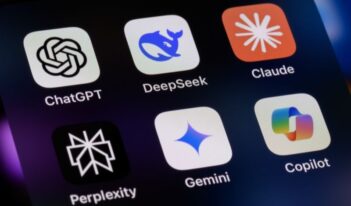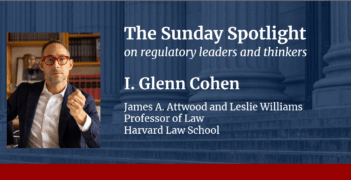
Generative artificial intelligence must be regulated across jurisdictions to address traceability.
Over two thousand years ago, a wise sage wrote the following story:
Formerly, I, Zhuang Zhou, dreamt that I was a butterfly, a butterfly flying about, feeling that it was enjoying itself. I did not know that it was Zhou. Suddenly I awoke, and was myself again, the veritable Zhou. I did not know whether it had formerly been Zhou dreaming that he was a butterfly, or it was now a butterfly dreaming that it was Zhou.
More recently, advances in artificial intelligence (AI)—especially in the generation of synchronized images and audio—have made it possible to create prompt-based synthetic videos with a level of realism that challenges the boundary between what is considered artificial and real. A prompt, for those who are not yet familiar with it, refers to the input provided to a generative AI system, whether text-to-text, text-to-image, or image-to-image, to steer its output.
These developments have given rise, also, to a growing body of videos and discussions centered on what has come to be known as “prompt theory,” which explores characters in AI-generated videos who are self-aware of their origins. These videos include unsettling philosophical provocations and humorous or crude takes tailored for instant consumption on TikTok. At the core of this emerging trend lies a provocative idea: that we ourselves may be the product of a prompt.
For those who have faith, the “prompter” might be a god. For everyone else, the challenge is to figure out what to do with this doubt concerning our origin. Regulators, for their part, have a more specific role: to facilitate a smooth and broadly accepted management of worldly affairs within a framework that seeks to distinguish for legal purposes what is real from what is artificial.
Historically, the distinction between the genuine and the counterfeit has often depended on labels or markers that establish authorship or origin, such as watermarks on banknotes. Here, the watermark is an embedded thread within paper pulp, functioning much like a primitive, single-block blockchain, where the first indelible trace validates all subsequent transactions. The technique originated in the 13th century papermills of Fabriano, Italy, and was adopted later, first in England, to verify the authenticity of paper money.
Now, watermarking is also one of the most viable methods for maintaining control over the traceability of AI-generated creations. It entails embedding a signal within the content itself to mark its artificial origin. This signal is designed to withstand modifications or, at the very least, reveal tampering by breaking when the content is altered.
In contrast, labeling relies on external markers such as metadata or disclaimers, leaving the content itself unchanged. Although labeling is more readily perceived by the general public when present, it is also more easily stripped away, rendering it a less robust solution compared to watermarking.
Once the need for regulatory intervention is acknowledged, the challenge of how to regulate becomes both technical and political. Technically, the use of digital labels and embedded watermarks in generative AI outputs has been explored and researched for several years, recently gaining momentum amid concerns over textual misuse such as academic dishonesty facilitated by models such as ChatGPT.
To be sure, technical solutions are not foolproof—they can be bypassed by malicious actors and require continual updates to remain effective. But the deeper obstacle lies in the absence of coordinated policy approaches. In short, legal interoperability of digital labeling and watermarking across jurisdictions remains a major unresolved issue.
As evidence of what has just been said, let us now focus on how the “Big Three” legal systems, the United States’s, the European Union’s, and China’s, are regulating ways to track AI.
In 2023, U.S. President Joseph R. Biden issued an executive order encouraging federal agencies to develop standards for labeling and watermarking AI-generated content. However, this order did not impose requirements on private companies—which have been the main AI innovators so far—and was later rescinded by President Donald J. Trump, who replaced it with an executive order omitting any reference to watermarking or labeling.
Regarding the very recently released document from the Executive Office of the President, America’s AI Action Plan, aside from an initial general statement on the need for AI systems to be designed in a way that pursues “objective truth,” there is no explicit mention of obligations regarding traceability. There is, however, a paragraph on how to “Combat Synthetic Media in the Legal System” where—although the focus is limited to preventing the spread of fake evidence in the judicial context—a concern does emerge, in its own way, about the need to trace the synthetic nature of texts, images, and videos. Once again, though, nothing suggests the adoption of concrete measures targeting businesses, which, for their part, have already undertaken various autonomous initiatives. A notable example is the voluntary partnership of high-tech companies through the Coalition for Content Provenance and Authenticity, aimed at developing standards for “content credentials” in coordination with the National Institute of Standards and Technology.
As for the EU, its AI Act, enacted in 2024, mandates clear disclosure of synthetic content and the labeling of deep fakes, building on the earlier Digital Services Act. The practical effects of the new act, however, will remain uncertain until it is fully implemented after a complex series of transitional periods set out by rulemakers.
China, for its part, is advancing regulation by focusing on the concept of “deep synthesis” to formalize traceability of AI-generated content. Following earlier 2023 interim measures, the China Cyberspace Administration (CAC) released new measures to standardize labeling practices, accompanied by a binding national standard, to take effect from September 1, 2025.
A shared solution connecting these separate paths on a global scale seems to be hindered by current geopolitical tensions and divisions. From this perspective, the 2024 report by the United Nations Secretary-General’s High-level Advisory Body on AI represented a missed opportunity to advance more concrete solutions. In fact, the final document made only a passing reference to labeling in relation to deep-fakes and omitted any discussion of watermarking. Nonetheless, the report’s calls for shared rules crafted by an international scientific panel and intergovernmental, multi-stakeholder policy dialogue provide a valuable foundation to reframe the issue of traceability on a new cooperative basis.
Just to be clear, the “zero-sum race” language that characterizes the entire America’s AI Action Plan doesn’t give much reason for immediate optimism. But beyond who ends up winning the AI race, global problems—such as understanding the nature of what we read, see, and ultimately experience, often drawing on sources from across the world—call for global solutions.
For the time being, then—flying about between what we are and what we dream of being—a reasonable proposal is to support the development of a shared reference framework. This framework should arise from good-faith international, institutional, and academic efforts, drawing on both unilateral regulations and voluntary standards designed to trace the origins of creations produced by diverse intelligences. By doing so, humans might thus more clearly define the boundaries of synthetic outputs—and perhaps be prompted to reflect more deeply on their own too.




